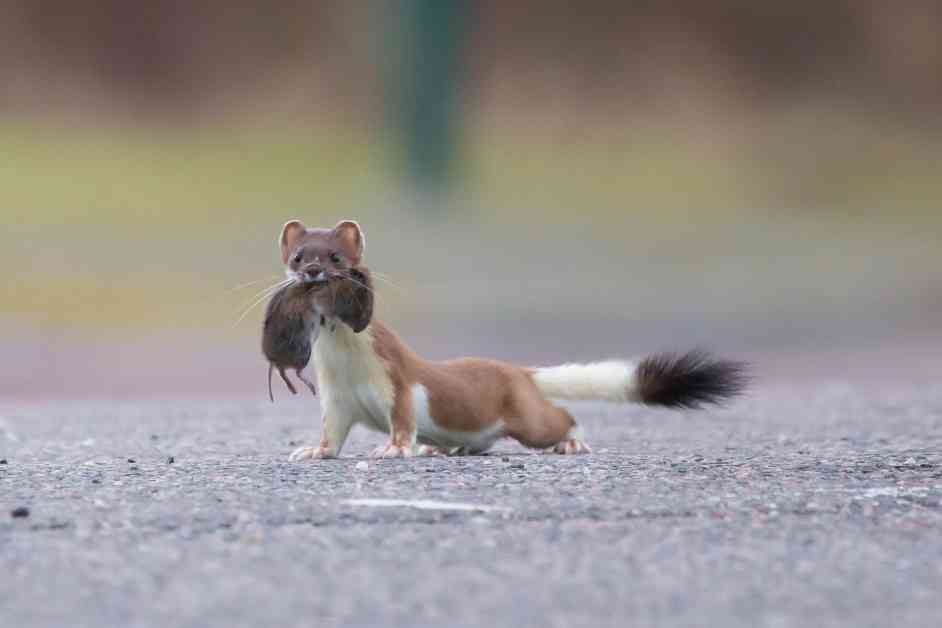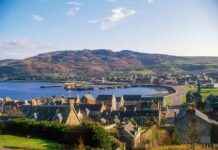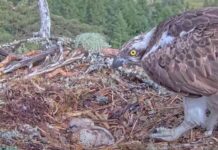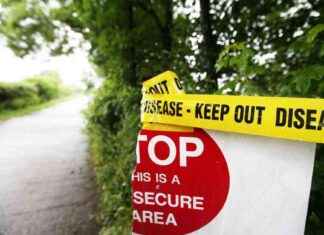The Orkney Islands, situated off the coast of Scotland, have long been recognized for their unique and diverse wildlife. However, in recent years, the presence of invasive stoats has posed a significant threat to the native animals and birds that call these islands home. In response to this pressing issue, a multi-million pound project has been launched to eradicate these predatory mammals from the Orkney Isles, with a recent funding boost of over £4 million injecting new momentum into the final phase of the eradication efforts.
### The Invasion of the Stoats
The first Orkney stoat was sighted in 2010, sparking alarm among conservationists and wildlife enthusiasts. These small but voracious predators, believed to have arrived on the islands via boats, quickly multiplied, posing a serious threat to the fragile ecosystem of the Orkney Isles. Stoats are known for preying on native wildlife, including birds, eggs, and smaller creatures, leading to a decline in population numbers and disrupting the delicate balance of the island’s biodiversity.
### Collaborative Conservation Efforts
Recognizing the urgency of the situation, a coalition of local stakeholders, environmental organizations, and government agencies came together to launch the Orkney Native Wildlife Project. This ambitious initiative aimed to rid the Orkney Islands of stoats and restore the natural habitat for the native species that have been under siege. The project brought together the expertise of international specialists, alongside the dedication and hard work of local communities, landowners, and conservationists.
### Funding for Conservation
The success of the Orkney Native Wildlife Project has been bolstered by recent funding announcements from key supporters. The National Lottery Heritage Fund has committed £2.5 million to support the project, recognizing the importance of preserving the unique biodiversity of the Orkney Isles. Additionally, the Scottish Government’s Nature Restoration Fund, managed by NatureScot, has pledged over £1.5 million to further advance the eradication efforts and ensure the long-term protection of the island’s wildlife.
### Impact on Native Wildlife
Over the past five years, the Orkney Native Wildlife Project has made significant strides in removing stoats from the Orkney Islands, with more than six thousand of these invasive predators successfully captured and removed. As a result of these efforts, there has been a notable resurgence in the populations of Hen Harriers, Curlews, Orkney Voles, and other rare and threatened native species that call the islands their home. The removal of stoats has allowed these species to thrive once again, contributing to the overall health and diversity of the island’s ecosystem.
### Preserving a Natural Haven
The Orkney Islands are renowned for their international significance as a haven for rare seabirds, waders, and other unique wildlife species. Visitors from around the world flock to these remote islands to witness the diverse array of flora and fauna that call this pristine environment home. However, the presence of stoats, introduced to the islands through human activities, has threatened the delicate balance of this natural paradise, underscoring the importance of swift and decisive conservation action.
### Government Support for Conservation
Government officials have underscored the critical importance of protecting Scotland’s natural heritage and biodiversity. Acting Net Zero Secretary Gillian Martin emphasized the need for urgent action to preserve important species and prevent further decline in Scotland’s wildlife populations. The commitment of funding from the Nature Restoration Fund will not only support the vital work of the Orkney Native Wildlife Project but also create green jobs and promote skills development within local communities, fostering a sustainable future for both wildlife and people.
### A Collaborative Approach to Conservation
The success of the Orkney Native Wildlife Project can be attributed to the collaborative efforts of a diverse range of stakeholders. Local communities, conservation organizations, government agencies, and international experts have come together to tackle the threat posed by invasive stoats and protect the native wildlife of the Orkney Isles. By combining their resources, knowledge, and expertise, these partners have achieved remarkable progress in restoring the natural balance of the island’s ecosystem and ensuring the survival of its unique wildlife.
### Looking Towards the Future
As the Orkney Native Wildlife Project enters its final phase, the focus is on completing the eradication of stoats from the islands and securing the long-term sustainability of the ecosystem. The recent funding injections from the National Lottery Heritage Fund and NatureScot have provided a crucial boost to these efforts, enabling the project to move closer to its goal of making the Orkney Islands stoat-free. With the support of these key partners and the dedication of all those involved, the future looks bright for the native wildlife of the Orkney Isles.
### A Testament to Conservation Success
The progress made by the Orkney Native Wildlife Project serves as a testament to the power of collaborative conservation efforts in protecting and preserving our natural heritage. By working together towards a common goal, we can overcome even the most daunting challenges and restore the delicate balance of our ecosystems. The eradication of stoats from the Orkney Islands is a shining example of what can be achieved when communities, organizations, and governments unite in the name of conservation, ensuring a brighter future for generations to come.
































